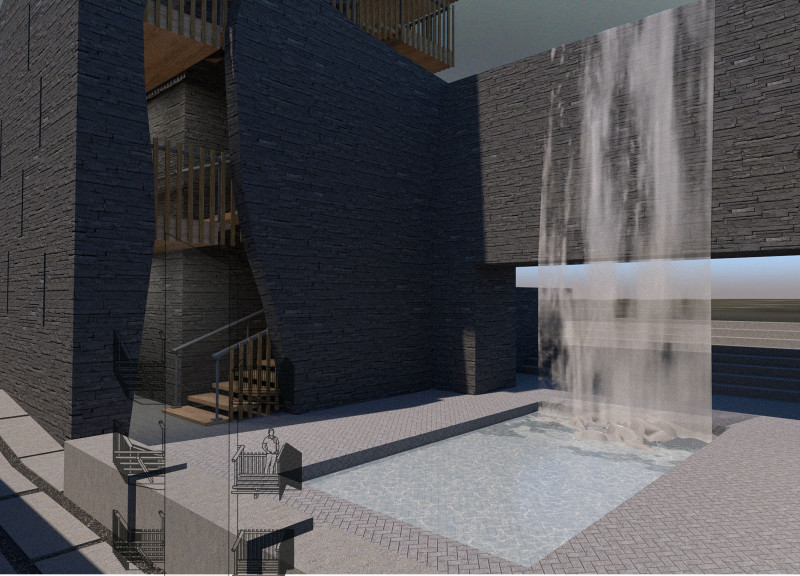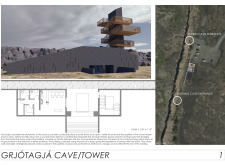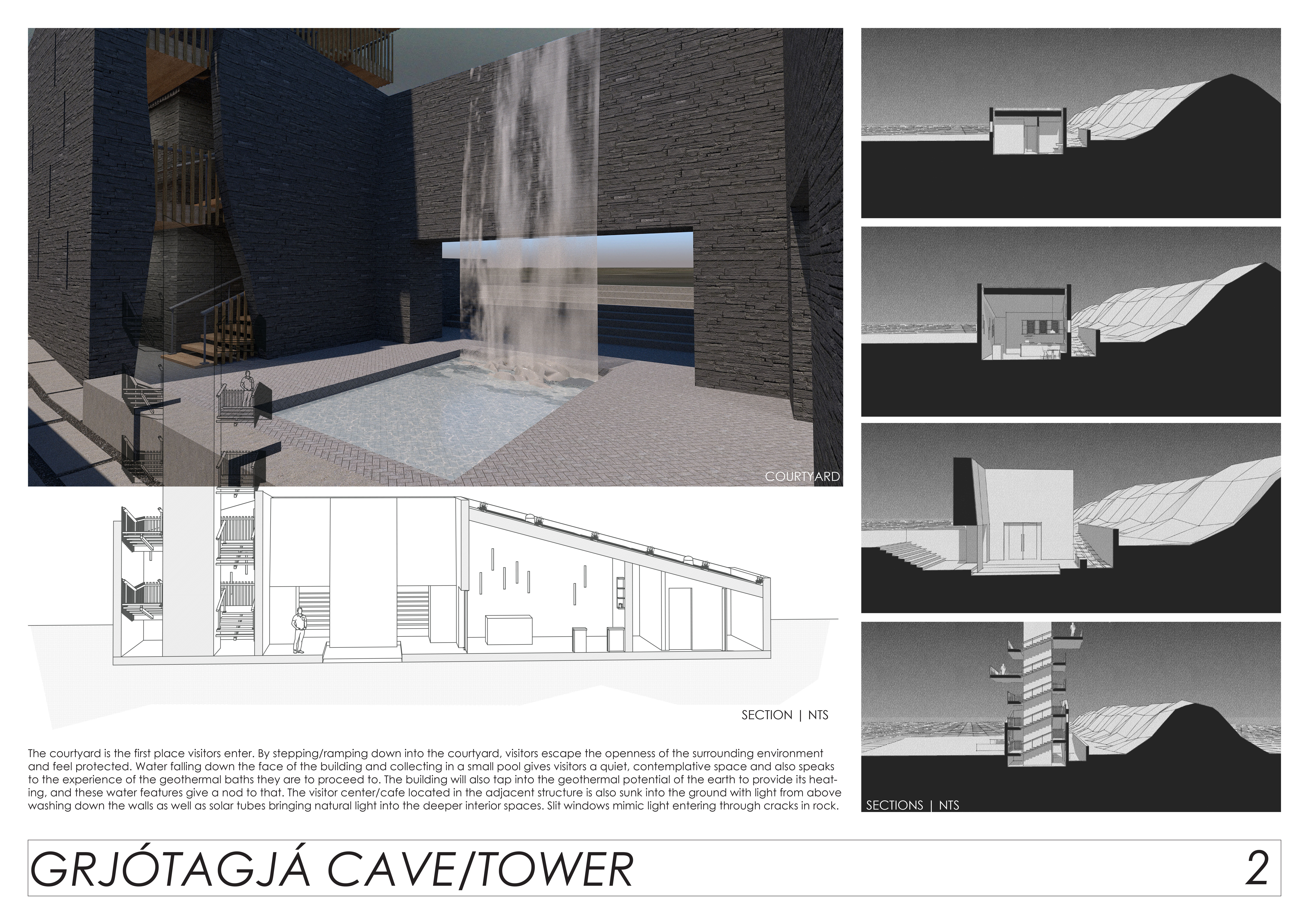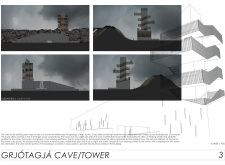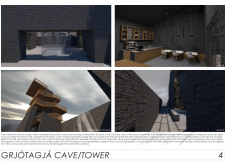5 key facts about this project
The Grjótagjá Cave/Tower project is a well-considered architectural endeavor located in Iceland, designed to harmonize with the surrounding geological formations while providing functional amenities for visitors. The design integrates two contrasting environments: the protective, introspective qualities of a cave and the expansive, open nature of a tower. This duality creates a unique spatial experience that invites exploration and contemplation.
A focal aspect of the project is its use of native materials, specifically dark stone and wood. The dark stone cladding of the tower is an intentional choice that allows the structure to blend seamlessly with the rugged landscape, emphasizing its connection to the earth. The use of wood in cantilevered elements not only adds warmth to the design but also establishes a dialogue with the natural environment.
The functionality of the Grjótagjá Cave/Tower is rooted in its capacity to serve as a visitor center, providing necessary amenities such as a café and restrooms. The design accommodates a new pathway leading to the geothermal bathing caves, enhancing the visitor experience through well-planned circulation. The incorporation of natural water features, such as a waterfall that cascades into a shallow pool, integrates sensory elements into the architecture, inviting interaction with the environment.
The unique aspect of the Grjótagjá Cave/Tower lies in its contextual sensitivity. Rather than imposing upon the surrounding landscape, the project seeks to engage with it thoughtfully. The staggered arrangement of the tower creates viewing platforms that provide panoramic vistas of the nearby tectonic plate. This relationship with the landscape allows visitors to appreciate both the architecture and the natural beauty of the site in a cohesive manner. Moreover, the inclusion of solar tubes facilitates natural lighting throughout the structure, decreasing reliance on artificial light and enhancing energy efficiency.
The architectural strategy applied in the Grjótagjá Cave/Tower emphasizes sustainability without sacrificing aesthetic value. By utilizing locally sourced materials and integrating natural systems, the design promotes eco-friendly practices characteristic of modern architecture. This project offers a compelling example of how architecture can enhance human experiences while respecting the environment.
For more information on the project, including architectural plans, sections, and designs, please explore the detailed presentation of the Grjótagjá Cave/Tower to gain deeper insights into its architectural ideas and overall execution.


